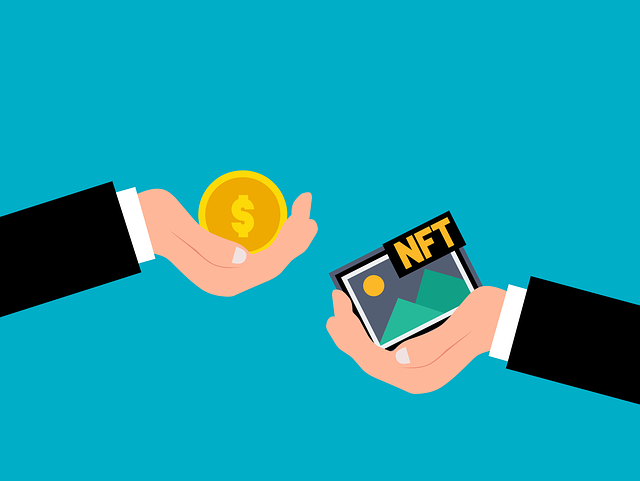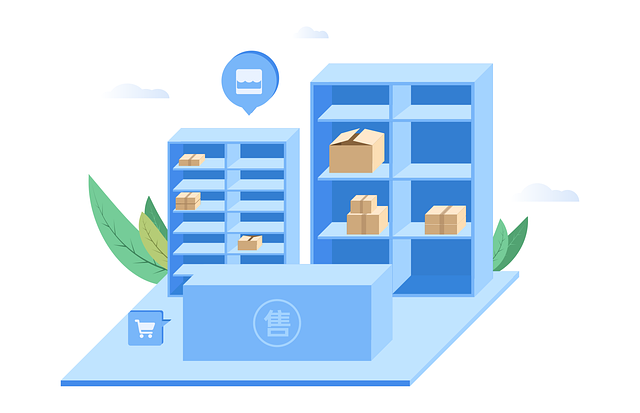Understanding Coinbase Crypto Sell Fee Breakdown
Author: Jameson Richman Expert
Published On: 2025-10-21
Prepared by Jameson Richman and our team of experts with over a decade of experience in cryptocurrency and digital asset analysis. Learn more about us.
Coinbase crypto sell fee matters to every trader and investor who wants to convert digital assets into fiat or other cryptocurrencies. This article explains exactly how Coinbase charges fees when you sell crypto, breaks down the components of those fees (spread, Coinbase fees, network/withdrawal fees), compares the app vs Advanced Trade, and offers practical strategies to reduce costs. You’ll also find clear examples, up-to-date best practices, and reputable external resources for deeper reading.

Why the Coinbase crypto sell fee matters
Selling crypto often triggers multiple costs that reduce your net proceeds: the exchange spread, platform fees, withdrawal or network fees, and sometimes instant-transfer charges from your bank. For active traders and long-term holders alike, understanding the total fee picture is essential for preserving gains and optimizing trading strategies. Transparency about these fees also matters for tax reporting and cost optimization.
Key components of Coinbase sell fees
When you sell crypto on Coinbase, you may encounter up to four fee types. Knowing each one helps you calculate the exact cost of a sell transaction.
- Spread — an implicit cost built into the buy/sell price (often around 0.5% each way but variable depending on market conditions).
- Coinbase transaction fee (or convenience fee) — a visible fee that can be a flat fee for small transactions or a variable percentage based on the payment method, transaction amount, and region.
- Trading fee (Advanced Trade/maker-taker fees) — if you use Coinbase’s Advanced Trade (formerly Coinbase Pro), a maker-taker fee model applies and can be substantially lower than the standard app fee.
- Network/withdrawal fees — fees for moving cryptocurrencies off-exchange to another wallet (this is paid to miners/validators, not Coinbase, though Coinbase may pass through or adjust how it’s displayed).
How Coinbase calculates the sell fee (detailed)
Coinbase’s public fee structure has evolved, but the typical components are:
- Spread: Coinbase often displays a spread of about 0.50% for conversions. This means the quoted price includes a small markup relative to mid-market price. The spread is variable and can widen in volatile markets.
- Coinbase fee: For transactions executed on the consumer app or website, Coinbase charges either:
- A flat fee for smaller transactions (for example, $0.99 for very small trades — rates vary by country and can change), or
- A variable percentage fee that depends on your payment method and region (credit card sales typically carry higher fees than bank transfers).
- Advanced Trade (maker-taker): If you use Coinbase Advanced Trade, fees are based on maker/taker tiers. Makers add liquidity and typically pay lower fees than takers who remove liquidity. Advanced Trade fees can start well below 0.5% and decline as monthly volume increases.
- Network fees: When you withdraw crypto to an external wallet, you pay blockchain network fees (gas fees for Ethereum, transaction fees for Bitcoin, etc.). Coinbase usually passes these fees through; they vary by network demand.
For the most current official fee schedule, check Coinbase’s own fee page (Coinbase fees), and consult Coinbase's help documentation for region-specific rules.

App vs Advanced Trade: Which is cheaper for selling?
Two primary user experiences exist on Coinbase:
- Coinbase consumer app/site: Simpler interface, convenient for beginners, but tends to be more expensive due to the spread + convenience fee model.
- Coinbase Advanced Trade: Lower fees via a maker-taker structure, advanced order types (limit, stop, etc.), and better price execution. Ideal for larger or frequent sellers.
Example: A $5,000 crypto sell could incur a 0.5% spread plus a variable fee on the consumer app (total cost often >0.75%). Using Advanced Trade might reduce that to 0.10%–0.50% depending on your tier — saving tens of dollars on a single trade and potentially hundreds over time.
Real examples: Calculating the total sell cost
Here are two practical examples to illustrate how the coinbase crypto sell fee can affect net proceeds. These are simplified and exclude taxes.
Example A — Small sell on Coinbase app
- Sell amount: $50
- Spread: 0.50% = $0.25
- Flat consumer fee (example): $1.49
- Total fees: $1.74 (3.48% effective cost)
- Net proceeds: $48.26
Small trades on the app are disproportionately impacted by the flat fee component. That’s why many users consolidate smaller sells into larger orders.
Example B — $5,000 sell via Advanced Trade
- Sell amount: $5,000
- Maker/taker fee: 0.20% (assume taker) = $10
- Spread: negligible on Advanced Trade because you’re trading on the order book
- Total fees: $10 (0.20% effective cost)
- Net proceeds: $4,990
For larger volumes, Advanced Trade almost always yields lower total fees.
Taxes and reporting — a hidden cost of selling
Selling cryptocurrency is generally a taxable event in many jurisdictions. Capital gains or losses must be reported to tax authorities. Coinbase provides transaction history and tax reports for users, but you should confirm your local tax rules with a qualified tax professional.
Helpful resource: For a general background on U.S. tax treatment of crypto, see the IRS guidance on virtual currency (IRS virtual currency guidance). International users should consult local tax authorities or a tax advisor.

Network and withdrawal fees explained
If your goal is to sell crypto and then withdraw fiat to your bank, be aware of withdrawal fees and settlement times:
- Fiat withdrawal fees: Commonly, ACH (U.S.) withdrawals may be free or low-cost and can take 1–3 business days. Instant bank transfers or card withdrawals usually attract higher fees.
- Crypto withdrawal fees: If you sell and then send crypto off-exchange, blockchain network fees apply and can vary dramatically (e.g., Ethereum gas spikes).
Minimizing withdrawal fees: convert to stablecoins (e.g., USDC) and use an on-ramp with lower network fees or withdraw via an ACH bank transfer when possible. But remember stablecoin conversion itself can incur fees and tax events depending on jurisdiction and method.
Practical strategies to reduce Coinbase sell fees
Here are tested tactics to lower costs when selling on Coinbase:
- Use Coinbase Advanced Trade for large or frequent sells — switch to Advanced Trade to access lower maker/taker fees and limit orders that avoid spreads.
- Place limit orders instead of market orders — if the market moves in your favor, limit orders can reduce slippage and avoid paying taker fees.
- Bundle small sells into one larger trade — avoid flat fees on small orders by consolidating several small sells into one larger transaction.
- Choose cheaper withdrawal methods — use standard bank transfers (ACH/SEPA) rather than instant card withdrawals when possible.
- Consider converting to stablecoins within Coinbase Advanced Trade — converting to a stablecoin on-platform and then withdrawing via cheaper rails may be cheaper for some users, but watch tax implications.
- Monitor network conditions — avoid withdrawing when network fees spike (e.g., Ethereum during NFT drops). Use L2 networks (Optimism, Arbitrum) or blockchains with lower fees when supported.
- Check regional payment method fees — fees differ by country; in some regions, bank transfers are much cheaper than card-based payouts.
When selling off-exchange might make sense
In some cases, peer-to-peer (P2P) platforms or decentralized exchanges (DEXs) offer lower costs, but they come with trade-offs: counterparty risk, less buyer protection, or technical complexity. Always weigh the lower fees against security and regulatory protections offered by centralized exchanges like Coinbase.

How to calculate your exact coinbase crypto sell fee before selling
Step-by-step checklist:
- Open the Coinbase app or Advanced Trade and select the sell order.
- Estimate the spread — on Advanced Trade, use the order book; on the app, assume ~0.5% spread as a ballpark (it can vary).
- Check the displayed Coinbase fee for that transaction. For small trades, check the flat fee; for larger trades, confirm the percentage or your Advanced Trade tier.
- If withdrawing crypto, estimate the blockchain network fee (Coinbase often displays this when you request withdrawal).
- Add any bank withdrawal fees if you convert crypto to fiat and withdraw to your bank.
Pro tip: Always review the order summary that Coinbase displays before confirming — it shows the estimated fees and net amount in most cases.
Common misconceptions about Coinbase fees
- “Coinbase charges only one fee.” — False. You can incur spread + Coinbase fee + network fee + withdrawal fee.
- “Advanced Trade is always free.” — False. Advanced Trade has lower fees, but maker/taker fees still apply at different tiers.
- “Withdrawing crypto is always expensive.” — Not necessarily. Withdrawal costs depend on the blockchain’s congestion and the coin used; some chains have negligible fees.
Security and regulatory considerations
Lower fees are attractive, but security and regulatory protections matter. Coinbase is a regulated and insured exchange in many jurisdictions, and that protection may justify slightly higher fees compared with unregulated alternatives. Always keep security (2FA, hardware wallets for large holdings) and compliance in mind.
For context on the company, refer to Coinbase’s Wikipedia page (Coinbase (Wikipedia)) for history and major developments.

Comparing Coinbase fees with other exchanges
Different exchanges use different fee models:
- Binance — maker-taker model with competitive tiers and discounts for BNB payments.
- Kraken — competitive maker-taker fees and lower withdrawal fees for some coins.
- Gemini — similar convenience fees for simple app trades but competitive advanced trading fees.
To optimize costs, research and compare exchange fee schedules and factor in deposit/withdrawal rails and security. A comprehensive guide to exchange fees and cost optimization can help; see this resource on crypto exchange fees (Crypto Exchange Fees Explained 2025).
Tools and calculators
Use fee calculators or the built-in order preview on Coinbase to estimate net proceeds. Spreadsheet templates that include spread, platform fee, and network fee columns can help you compare scenarios before executing trades.
What to watch for in 2025 and beyond
Industry fee structures can change rapidly due to regulatory pressure, competition, and protocol-level upgrades (e.g., Ethereum staking/L2 adoption reducing gas costs). Staying informed about fee model changes on major platforms like Coinbase is essential. For additional market context and price outlooks that might affect timing of sells, explore expert analysis such as long-term asset forecasts (XRP Price Prediction 2030).

Frequently asked questions (FAQ)
Q: Does Coinbase charge a different fee for selling vs buying?
A: The visible fee structures are similar, but effective costs can differ because of spreads, payment methods, and whether you’re using Advanced Trade. Selling to a bank can trigger different rails than buying with a card.
Q: Can I avoid the spread on Coinbase?
A: Using Advanced Trade with limit orders and maker trades can minimize or avoid the implicit spread because you trade on the order book rather than taking the market price.
Q: Are network fees included when I sell to fiat?
A: If you sell crypto for fiat and withdraw fiat to your bank, you typically avoid crypto network withdrawal fees (because you don’t send crypto off-exchange). Network fees apply when transferring crypto off the platform.
Q: How do I get lower fees if I trade frequently?
A: Use Advanced Trade, apply for higher volume tiers, or consider fee discounts (if available). Additionally, consolidate orders and use cheaper deposit/withdrawal rails.
Actionable checklist before your next sell
- Decide whether to use Coinbase app or Advanced Trade.
- Check the live order book and use a limit order if possible.
- Estimate spread + Coinbase fee + potential withdrawal/network fee.
- Consider timing to avoid high network congestion.
- Review tax implications and maintain records for reporting.
- Confirm the final order summary on Coinbase before submitting.
Further reading and authoritative resources
Official Coinbase fees and policies (Coinbase fees) — always the primary source for the most up-to-date fee schedules and regional rules.
Company background and public filings (Coinbase (Wikipedia)) — useful for understanding Coinbase’s business model and regulatory history.
Additional context on minimizing exchange fees and market-level impacts can be found in comparative reviews and guides, such as a comprehensive guide to exchange fees (Crypto Exchange Fees Explained 2025). If you’re interested in broader market signals and long-term asset outlook that may influence when you sell, see expert analysis and forecasts (XRP Price Prediction 2030).
For traders looking at different trading platforms and tools, consider reviews like the Exness Trade App analysis (Exness Trade App Review), which compares features and fee structures across trading apps.

Summary — the bottom line
Understanding the full breakdown of the coinbase crypto sell fee is crucial to maximizing returns and minimizing costs. Fees are rarely a single line item: they are a combination of spreads, platform fees, maker-taker structures, and network/withdrawal charges. To minimize costs, leverage Advanced Trade for larger or frequent sells, use limit orders to avoid taker fees and slippage, consolidate small sells, choose cheaper withdrawal rails, and stay informed about network congestion and regulatory changes. For ongoing cost optimization and strategy, use the official Coinbase fee disclosures and independent guides to compare alternatives.
By applying the actionable steps above and reviewing your trade before submission, you can significantly reduce the effective cost of selling crypto on Coinbase and keep more of your gains.